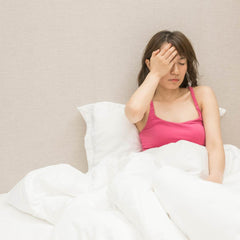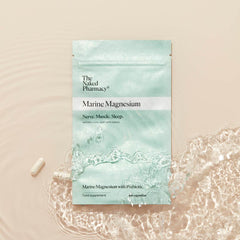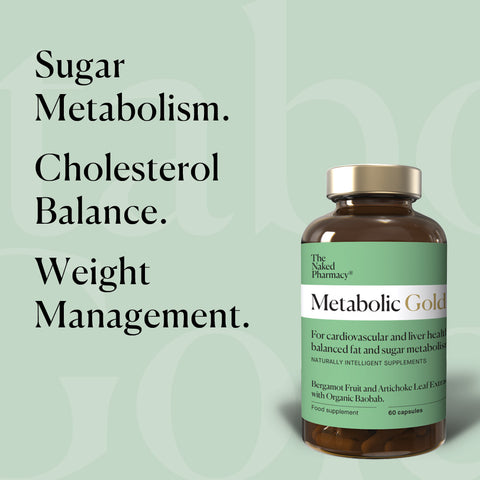12 Tips to Manage Christmas with Children with ADHD
Make Your ADHD Christmas Fizz Not Fizzle
We all want to avoid decking the halls with boughs of folly, let’s shine a special spotlight on the hidden struggles ADHD kids and their parents face during what can be the most frenzied time of year.

Is an ADHD Grinch-free Christmas possible?
ADHD in children means that anxiety and exhaustion can wrestle against enjoyment. While low dopamine might make the hunt for stimulation high, pushing that ‘annual magic’ too hard can mean it all unravels like a badly knitted Christmas stocking.
Alongside beautiful characteristics such as intelligence, imagination and empathy come other ADHD traits the NHS list as social anxiety, sight and noise sensitivities, emotional dysregulation and overwhelm that can really take the crackle out of Christmas.
Our ADHD-friendly 12-days of Christmas
While we can't promise your Yuletide will run without a hiccup, a few tweaks could make your ADHD Christmas much more of a cracker than a crash.
- Dreaming of a bite-sized Christmas
Protect their social battery – ADHD kids expend a lot of energy. They can also quickly become overwhelmed.
Consider trimming the festivities: stick to immediate family on the big day and spread out the extended crew on different days, giving kids a chance to recharge in between. Who said Christmas can't be done in bite-sizes?
- Good King Senses
ADHD in kids often means being up against sensory nightmares – think loud TVs, clinking glasses, gaudy Christmas lights, paper hats that feel like a crown of thorns, being hugged when you hate touch. These can all be major ADHD sensory triggers.
It’s a good idea to establish a code beforehand to use for a quick escape, set up a quiet space with soft lighting, and bring an iPad and noise-cancelling headphones with you. Sometimes, a strategic retreat is the best gift.
- Managing expectations
Before the festive break, ask your kids what they really want – even if it’s as outrageous as a wishing well (trust me, I’ve been there) or a sleep fairy (actually, I asked for this). If their dreams are bigger than Santa can handle, be upfront about it. No child wants to discover the mega-Lego set they’ve set their heart on is off the table on Christmas morning, especially when emotional dysregulation is such a significant part of ADHD.
Spare them the stress of unwrapping gifts in front of family. Here's what Lillia, 15, says: “You’re expected to have a positive reaction and that can be stressful especially as you’re already the centre of attention – that’s already socially draining. You must then react a certain way, regardless of how you feel, and force yourself to look happy even if you’re not. That’s a lot of pressure.”

- Ditch Christmas shopping
Being trapped inside busy, stuffy, noisy, crowded stores with long queues can be the seventh circle of hell for any child. Ramp that up ten-fold for an ADHD child.
Here’s some advice from Lillia: “If your child doesn’t show an interest in going shopping with you, don’t force them. Leave them with a relative, friend or parent as they’re likely to find it stressful.”
“If you can’t do this – or they want to go –take a friend with you. That way, if they find it too overstimulating, the friend can step out with them. If they’re old enough to be independent, they can go to a nearby café and wait there.”
The key thing is “to give them some options”.
- Don’t force the fun
Asking an ADHD child to ‘join in’ when they’re already struggling to keep it together is likely to provoke a frosty withdrawal or a meltdown. Whether it’s time at pantos or fun with relatives, consider breaking visits into manageable chunks.
Lillia advises, “Don’t get mad at a child for wanting to sit out. Don’t nag them to return if you think they need more social interaction. If they’re not up for it, don’t force them.” She reminds us that socialising “shouldn’t feel like a chore”.
- Do plan the fun
It’s worth looking out for any Christmas-themed activities happening near you, like ice skating or Christmas markets. You can even make a den at home and watch Christmas films inside. Having something for your ADHD child to look forward to every day keeps their dopamine boosted the right way. If possible, get outside. ADHD and exercise have been shown to help with a reduction in their ADHD symptoms.

- Better fuel this Yule
With chocolate everywhere, our ADHDer’s dopamine-seeking brains will be partying without thinking of the crash.
We know impulse control makes it hard for them to stop, so instead let them have a nibble and keep the rest somewhere safe especially for them.
Turkey, on the other hand, is loaded with tryptophan which boosts serotonin for better moods and less anxiety. For a science-backed mood enhancer, try saffron – nature’s way to feel better and tackle ADHD symptoms.

8. No scary mystery dishes
If they’re already on a knife edge, a Christmas feast with too much food could be overwhelming. It’s a good idea to always have one comforting go-to dish for your ADHD child.
It’s worth knowing that 90% of serotonin is created in the gut. A lot of ADHD children have stomach issues, from cramps to constipation. If this is your child, it might be worth looking at Gut Love.
- Keep a routine
Although that dopamine kick wants novelty, it doesn’t mean routine should be chucked out of the window.
Discuss plans and try not to spring surprises on them. That certainly doesn’t mean Christmas has to be dull. It just needs a bit of planning. ADHD loves stimulation, but also thanks you for putting some reassuring scaffolding in place.
- Emotional regulation check-in
Emotional dysregulation is a hallmark of ADHD, where kids experience emotions more intensely, longer and deeper than their neurotypical peers. It’s often the most hidden part of ADHD too.
Dr Caroline Buzanko points out that when a child’s emotional brain is on overdrive, logic takes a back seat while the ‘emotional brain will overpower the cognitive brain every time’.
Instead of using reason which taps into their already depleted executive function skills, Dr. Buzanko suggests harnessing emotional energy. “Emotions are stronger motivators than reason.” Use gratitude, pride, and compassion – and we’ll all see fewer meltdowns.
Stimulating the vagus nerve is also said to help: You can even do this by singing cheesy Christmas hits.
And let’s not forget Saffron. This is Mother Nature’s gift for managing moods, ADHD, hormones, sleep and more.
- Sleep fairy
With brains buzzing like pinball machines, ADHD kids struggle to fall asleep or get enough of it.
ADHD-related sleep problems come from issues with the regulation of brain activity that can mean anything from a delayed circadian rhythm and later melatonin production, to insomnia.
The usual sleep hygiene rules apply, including getting outside in the earlier part of the day to try and set sleep cycles, as well as keeping to the same wake-up time each morning can help.
Another natural great way to help your ADHD child unwind is magnesium. It regulates neurotransmitters related to mental tension – learn more about it here.
And of course, Saffron is great for mood balance as it helps banish stress. Saffrosun Calm and Saffrosun for Children can help sooth away anxiety and make for a more restful night.
- Nature and Nutrition for ADHD
Thankfully Mother Nature has some pretty special gifts which can help with many of the challenging symptoms of ADHD. Look out for:
Saffrosun Calm (and for Children)
Which helps alleviate nervousness, improves sleep and restores emotional balance. It also enhances dopamine, serotonin, and noradrenaline—ideal for ADHD.
Supports nerve and muscle function, improves sleep and reduces stress and helps to decreases brain fog.
Immune Hero for Children
Contains Zinc to regulate dopamine and aids iron absorption, that’s essential for brain development and cognitive function
Gut Love (+14)
Enhances digestive health and alleviates gut issues in ADHD kids by improving the absorption of nutrients.
Foods that can help ADHD symptoms
The nutrients in certain foods travel to the brain and contribute to dopamine production, for example lots of fruits and vegetables.
Protein, including lean meats like turkey is great, as are foods rich in omega-3 fatty acids like salmon. Research has shown that consuming the amino acid tyrosine found in milk and bananas and more can also increase dopamine availability.
Try to avoid sugar and artificial colourings.
If you have any questions please do not hesitate to contact our pharmacists on pharmacist@thenakedpharmacy.com or call us 01483 678 438.







































